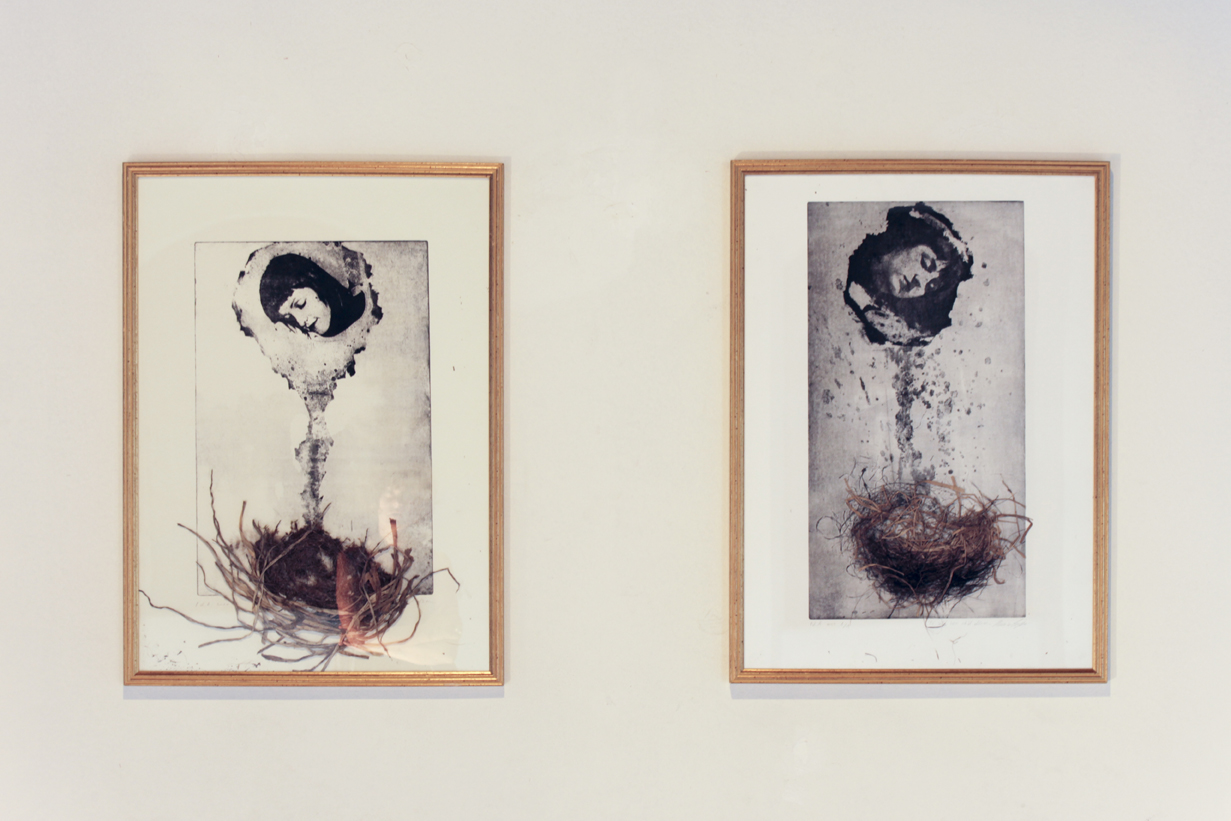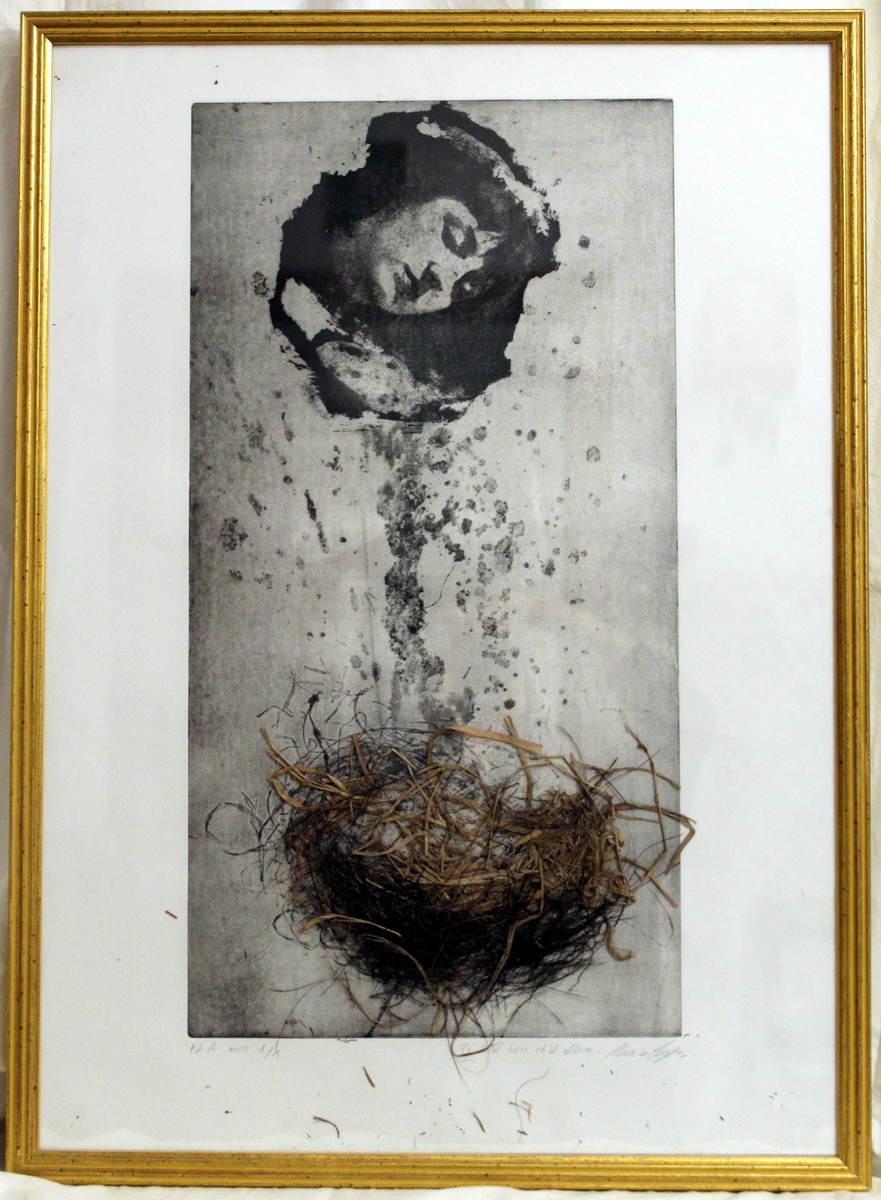DIE SCHÄLFERIN
“Die Schläferin” (The Sleeper), Mixed media aquatint etching with nest2010, 50x70 cm, 2010
An alchemic ritual of emulsions and powders that seems to enchant these cold metal sheets, upon which emerge the trace of a memory, something glimpsed or dreamed, assuming the peaceful pose of a face in repose.
Die Schläferin, The Sleeper
These etchings represent a series of five large limited edition prints, created using a combination of engraving techniques. Extracts of photographic images were imprinted onto metal plates that then underwent a final etching with aquatint. It is the purposefully uncontrolled action of the acid and the aquatint on the plates that gives the figures their irregular appearance and dreamlike quality, in which dream and dreamer become confused. The sleeping faces are impalpable, evaporated in the chiaroscuro of memory, yet at the same time dragged, almost falling, towards the material, represented by bird nests pressed still living into the image. In these living materials we see the act of birth from which the work evolved, with fine dust from the rosin and the oxidation process on the metal of the plates.
Die schläferin, opera, diptych, variable dimensions
These five aquatint prints have been exhibited on several occasions and according to different exhibition concepts, always with the intention of respecting the “spirit” of the specific location. For example, at the “Kolosssaal” exhibition at the Akademie der Bildenden Künste München (2009), the first print was hanged on the wall, projecting its shadow onto a pile of snow that, as it melted, slowly spread the shadow’s edge across the wooden floor of the space. Another two of the five prints were presented as a diptych at the “Ex Fabrica” exhibition at the Mumat of Vernio (2014). In this case, the nest contained in the prints, representing that primordial act of creation – the weaving of birds, entered into a dialogue with the installations of textile artist Laura Guerinoni. In 2010, in Santarcangelo di Romagna, at the Historical Archaeological Museum, all five aquatint prints were placed at the foot of a late-period medieval altarpiece. The interplay between the work and its environment in this case was realised through the subtle dialogue of glances between the seraphic faces of the saints and the sleepers of the prints.





